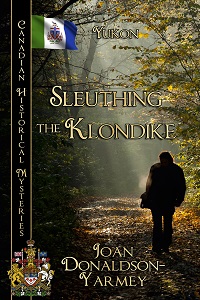https://books2read.com/The-Art-of-Growing-Older
https://bwlpublishing.ca/donaldson-yarmey-joan/
Facing Fears
I have a fear of flying, a fear of heights, and a fear of falling from heights. My motto: I believe in terra firma. The more firma the less terra.
Because of those fears, it took years before I would fly and more years before I trusted the plane I was on not to crash. Even now I still worry each time I get on a plane. Recently, I was on vacation in Mazatlan with my son and daughter-in-law. Their timeshare is right on the beach so I would watch people parasailing out over the ocean and landing safely back on land. It is something I’ve watched before and thought I would like to try-someday. Well, that day arrived while I was there. I gathered up my courage and with my son at my side, went to talk with the men on the beach. I paid the money and was given a life jacket to put on. Then I was hooked up to the sail and a rope from the boat knotted to the equipment. I was told to sit and the boat started pulling me over the sand and soon I was rising up in the air.
My stomach clenched, I held on to the straps for dear life, and I started to hyperventilate. But I looked at the view and it was amazing: the ocean, the city, the mountains in the distance. However, each time the wind whipped at the sail and I went sideways I would gasp and may even have done some swearing. I had been told that once I was up in the air I could relax and let go of the straps. No %$&# way. I was taken in a loop over the water and eventually the boat slowed and I began to descend. I had a walkie talkie and was told to pull on the ropes of the sail to guide me towards the beach (I’d been given instructions how to do it) and I made a safe, stand-up landing. And I felt exhilarated. I had done it, faced my fears and had a new experience.
Fear is fear and many new writers face the fear of sitting down and writing the story they want to. Many don’t tell anyone about their writing aspirations. Part way through their manuscript they doubt their abilities as a writer and think about scraping the whole process. If they finish the manuscript, they worry that no one will like and are afraid to put their ‘baby’ out in the world where it risks rejection. If they do find someone to read it and get back some negative feedback, they are tempted to quit writing altogether. If they get far enough in the process where they think about trying to find an agent or publisher, all the worries surface again. Each of these is a big step in a writer’s life and fear and doubt rule them all. Even once a book is published the writer wonders how it will be received by the readers.
If I didn’t face my fears of flying and heights, I would never
go beyond the oceans that surround Canada. As a writer, if I hadn’t overcome my fears of
rejection I wouldn’t have over twenty books traditionally published.
Even if my first writing hadn’t been accepted, I
would still
consider myself a winner for I had been brave enough to try something
new and
different. Just like flying, and walking across bridges that span
canyons and
gorges, and parasailing, I have done something that scared me and won.
So I advise every new writer to follow your dream and don't let fear
stop you. Face it and overcome it and enjoy being a writer.
.jpg)




.jpg)
.jpg)




